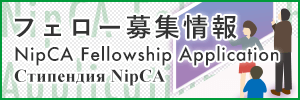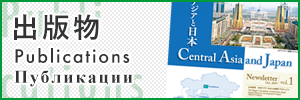Saltanat Boteu
Being born and raised in landlocked country as Kazakhstan in the middle of the wide steppe with continental climate, the trip to Okinawa Island is a contrasting and impressive experience. As a part of the Nippon Foundation Central Asia fellows’ study tour, our destination was Naha city on the mainland of Okinawa Prefecture. The long and rich history of the prefecture, earlier known as Ryukyu Kingdom, is reflected in the city’s memorial parks, museums and architecture. One of such objects in the city is Okinawa Prefectural Museum and Art Museum.
The museums’ architecture attracts attention already from the first glance, which is designed in the image of gusuku (グスク), a historical Okinawan castle. The white color stone castle immediately makes one curious about its architecture that takes its roots long ago in the region’s history. The building consists of Okinawan Prefectural Museum and Art Museum, which were opened based on Higashi Onna Museum, founded in 1946.

Right from the entrance to the building, one can sense its welcoming atmosphere. A small guidance booklet in Japanese, English, Chinese, Korean, and Spanish languages are available along with audio guide equipment free for visitors. The next one sees entering the castle is a big hall with futuristic columns reminding uniqueness of the place that preserves information about history, culture, traditions, art and nature of the Okinawa Prefecture in various forms, shapes and textures.
Coming from contrasting cultural background, one may assume that there might not be similarities among nations, but for many centuries having different cultures and life conditions, people around the world continue to care about same values and express similar concerns. Okinawan people, as many nations around the globe, value their cultural heritage, pay tribute to their history and remember braveness and hard work of people, who contributed to peace and harmony on the islands. All these are illustrated in the museum’s exhibition that consist of approximately 94,000 objects (as of 2017).
The entrance to the general exhibition of the museum also surprises its visitors with glass floor with coral reefs under their feet, which creates a feeling of walking in ocean preparing one to an unusual journey to the Okinawa Islands’ life. The next interactive exhibit in the middle of the central room of the museum features creation of the Ryukyu Archipelago. By pressing the button, one can see changes of the region’s landscape and even hear the sound of typhoon coming to the islands.
The museum’s permanent exhibition consists of seven thematic ones. Each of the exhibitions are dedicated to a certain period of Okinawa Islands starting from ancient times of the 18,000-year old Minatogawa Man. It illustrates that time’s fossils, shell mounds, animals and birds. The next exhibition is dedicated to Gusuku Era, when powerful rulers appeared on the Okinawa Islands scene raising Ryukyu Kingdom. “A Prosperous Kingdom” exhibition draws attention to the flourishing of the kingdom as a leading East Asian trading nation. The next two thematic exhibitions further illustrates establishment of modern Ryukyu culture under Japan’s Tokugawa regime and crisis period before entering to modern Okinawa era.
Particular attention is given to the “Postwar Okinawa” exhibition during which the governmental authority on the islands was taken by the United States for 27 years. The expansion of American military bases in the region left its footprint in the history and development of Okinawa Islands. Japan regained its authority on the islands in 1972, although some parts of the islands remain under the American authority.

There are five sub-exhibitions located around the general exhibition room that help visitors to know Okinawan Islands more deeply. Those include exhibitions on natural history, archeology, arts and crafts, history and folk customs. The folk customs sub-exhibitions particularly attracted my attention as it illustrates Okinawan people’s traditions and lifestyle including fishing, farming, spiritual and cultural rituals and arts. I was even able to listen to recording of singing and playing sanshin (三線), an Okinawan string musical instrument that at first reminded me of Kazakh string instrument dombyra. Although both instruments have their own peculiarities in terms of sound and materials they are made from, it is striking how music can be a common language for people that one don’t have to learn to understand.
The other no less fascinating exhibitions are in the Art Museum collection that consists of approximately 3,700 pieces of contemporary artworks including videos, photography, sculptures, paintings, drawings and prints that were nurtured by Okinawan culture in different periods. The artworks reflect social and political realities of the times and draw attention to vital issues, cultural changes and Okinawan people’s values and perceptions. Having seen the Okinawan Museum and Art Museum, one will get acquainted with rich culture, nature and values of the Okinawan people and cannot stay indifferent to it. The value of knowing new cultures and language more strengthened in my worldview after this interaction.



